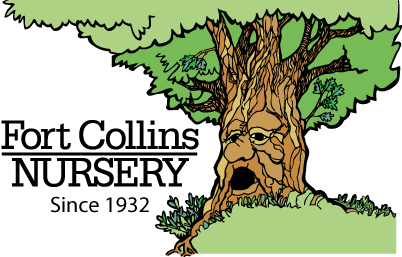By Shannon Moreau

Here in sunny Colorado, designing shade gardens can be daunting. It is difficult to know where to start and seemingly impossible to guess what will thrive in our climate. Fortunately there are many hardy and dependable perennial plants that will shine in even the darkest corners of the landscape. Before you start picking out plants there are a few crucial steps that will set you up for success.
One of the most important things to remember when you begin designing your shade garden is that not all shade is created equal. Note the different conditions that trees provide in your landscape and how dense the shade or how much sun your planting area receives. Trees like aspen and honeylocust provide dappled shade, allowing light to penetrate while protecting many plants in the understory for the hottest parts of the day. Deep shade is often found under the broad canopies of trees like Norway maples, lindens, and many large conifers. When it comes to partial shade, the time of day that your landscape gets direct sun is a key component. Due to our high elevation, plants that would thrive in partial shade in other states may not be able to withstand the same conditions in Colorado. Plants that prefer partial to dense shade will perform well in gardens with morning sun and afternoon shade. In contrast plants that prefer partial to full sun will thrive in areas with afternoon sun and morning shade.
Once you have determined how shady your beds are, take a look at how your landscape will be watered. You may find that the dappled shade under your aspen stays moist throughout the growing season but the spot shaded by a structure stays relatively dry. While many landscape plants suited for shady locations do best with moderate to high moisture, there are quite a few that grow great in dry shade. For successful plantings choose a mix of plants with similar water and light needs.
Now it’s time to pick plants! Outside of staple plants like hostas and hydrangeas, there are a myriad of plants to choose from. Here are a few of my favorites. Each of these will do best with moderate to low water. Moving from big to small, I will start with larger sized shrubs then move down to the smaller herbaceous perennials.
- Diervilla – Diervilla lonicera
This hardy shrub-form Lonicera is a powerhouse in the landscape. Varieties like Kodiak Orange have small yellow flowers that attract butterflies, bees and hummingbirds coupled with vivid orange new growth. It can adapt to dry shade, and while its foliage color will be more vibrant in bright locations, it can handle full sun to dense shade.
- Snowberries and Coralberries – Symphoricarpos spp.
Similar to Diervilla, native and non native snowberry and coralberry can adapt to a wide array of conditions. The arching branches, small blue-green leaves, and pink flowers make this shrub ideal for borders and woodland inspired shady gardens.
- Quince – Chaenomeles spp.
This early-blooming shrub performs best in partial shade to full sun but can handle low light. With excessive shade, Quince often loses its vivid ruffled blooms, however the glossy leaves and unique branching structure still offer height and interest in the landscape.
- Waxflower – Jamesia americana
A native shrub that is part of the Plant Select program, showy white flowers appear in May-June. At lower elevations it needs protection from the heat. Waxflower performs best in landscapes with afternoon shade and well-draining soils.
- Currants – Ribes spp.
Focusing specifically on the golden currant Ribes aureum and the wax currant, Ribes cereum, these two hardy natives are excellent pollen sources for early season pollinators. The golden currant is ideal for full sun to partial shade while the wax currant will do the best when planted in partial shade. In the fall both will burst into fiery shades of red, orange and yellow.
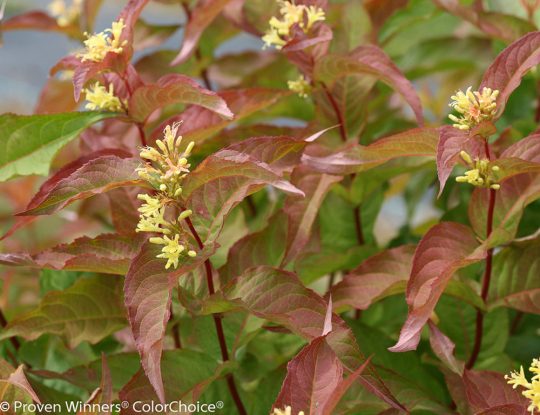
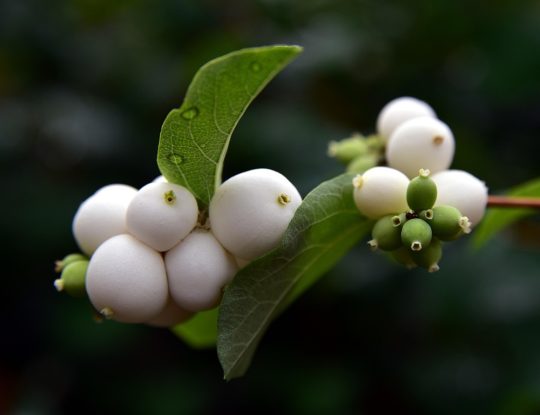

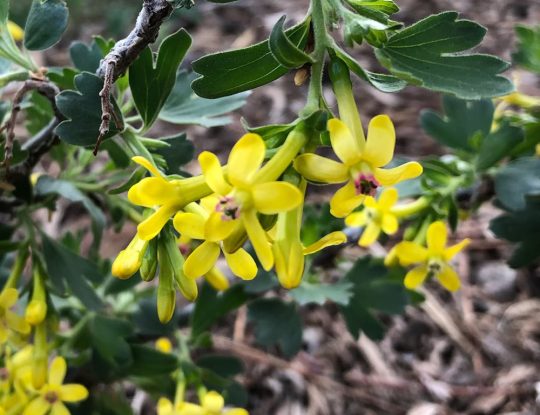
Now onto the herbaceous perennials:
- Aralia – Aralia cordata
The lime green compound leaves of the Sun King Aralia offered height and color in spaces dominated by deep, dark colors. Growing up to 3’ x 3’ this herbaceous perennial does best in partial shade to deep shade in Northern Colorado.
- Sticky geranium – Geranium viscosissimum
Commonly found in the understory of conifers in the mountains, the native geranium shines brightly from the cool corners of partial shade gardens. Like other varieties it boasts pale purple flowers in early summer and striking fall color.
- Coral Bells – Heuchera spp.
I love the diversity of Heuchera, and with new introductions every year they are a skeleton key in the shade garden. While Sandia and Snow Angel coral bells do best in well draining locations on the sunnier side, varieties like Black Pearl and Caramel add color to areas with partial or dense shade and more moisture.
- Sweet woodruff – Galium odoratum
Short and sweet, the grass-green leaves of this ground cover create a lush carpet in the shadiest locations. Small fragrant white flowers appear in late spring and early summer, adding to the charm of this hardy perennial.
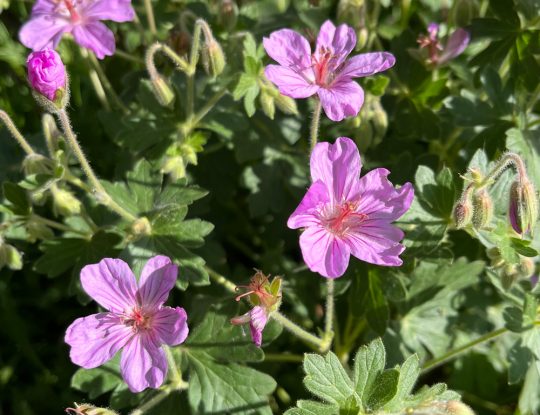
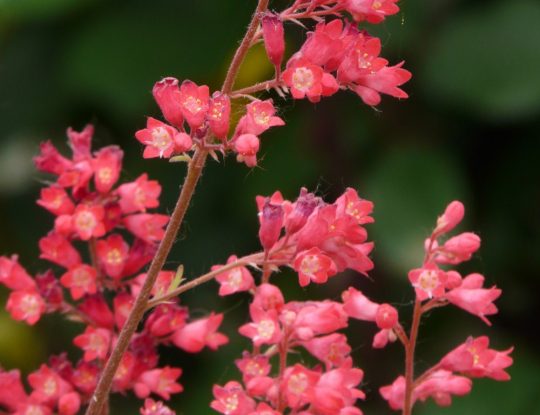
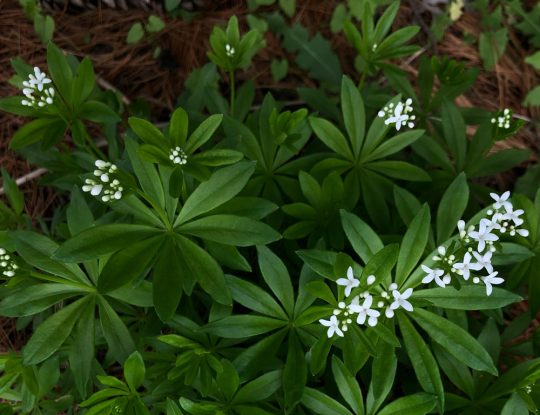
The above selections are just a fraction of the plants that can be grown in Colorado shade gardens. For further inspiration check out gardens in your neighborhood or local public gardens like the Perennial Trial Beds and Demonstration Garden at CSU, the Gardens on Spring Creek, the Cheyenne Botanic Gardens, and the Denver Botanic Gardens.
Originally published on June 30th, 2025. Updated on July 2nd, 2025.
